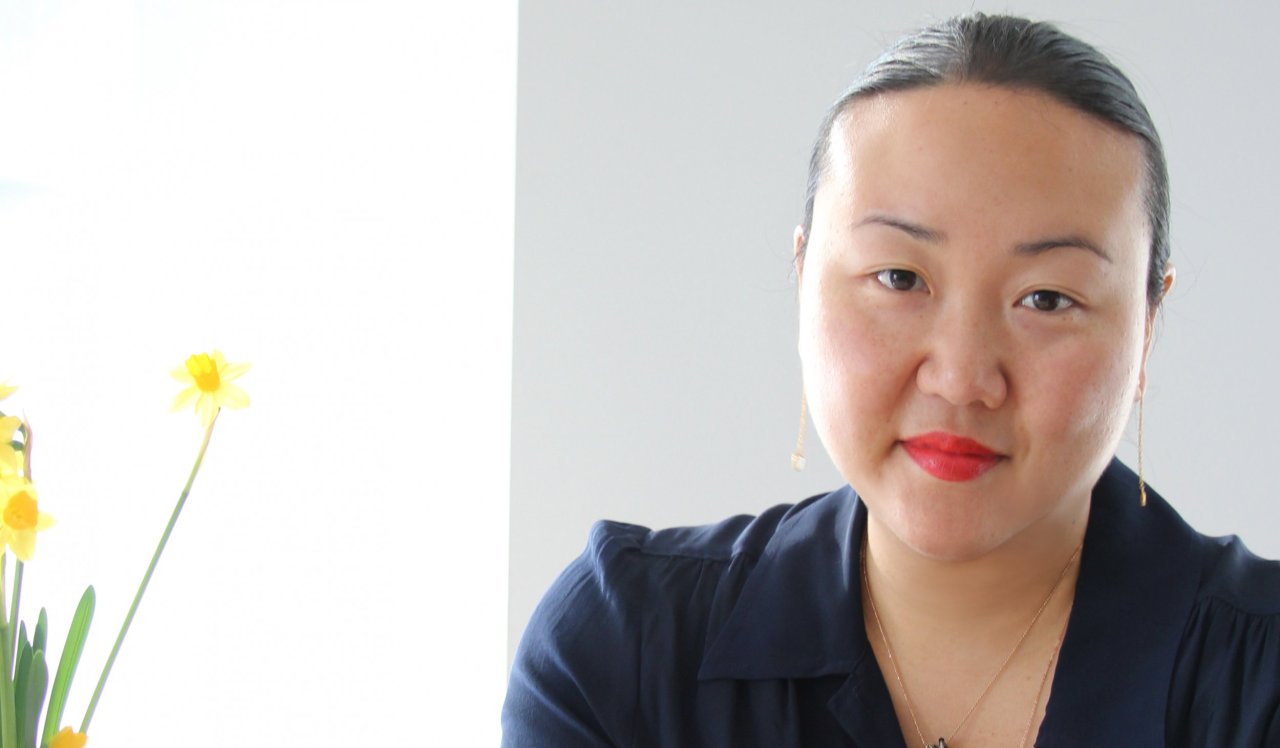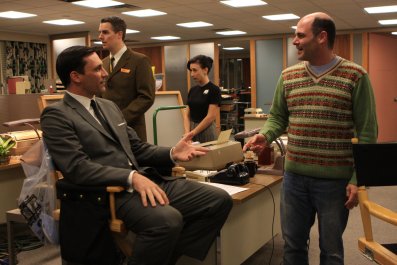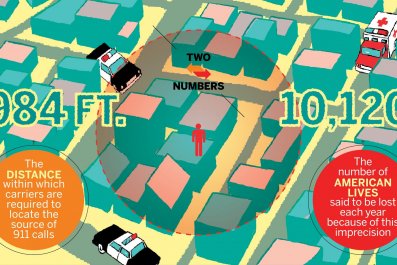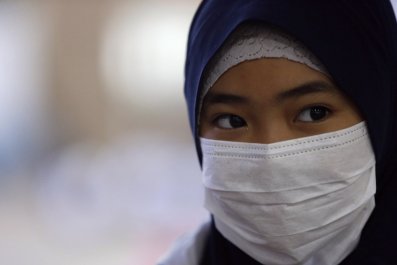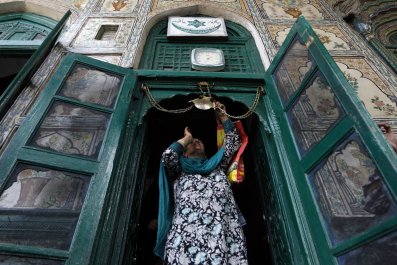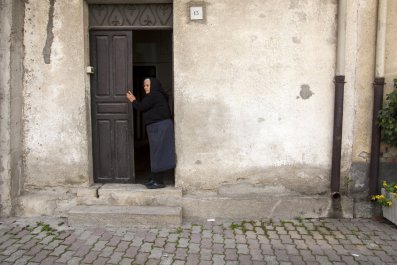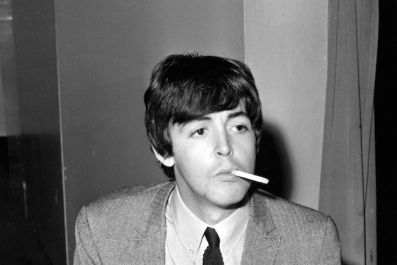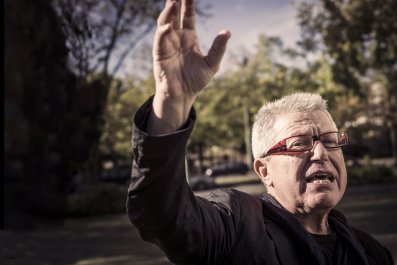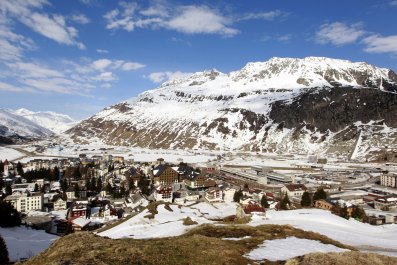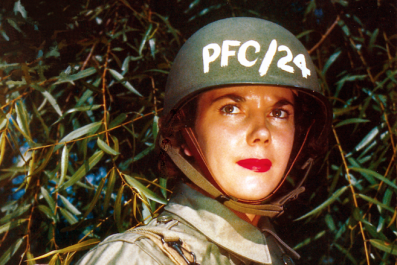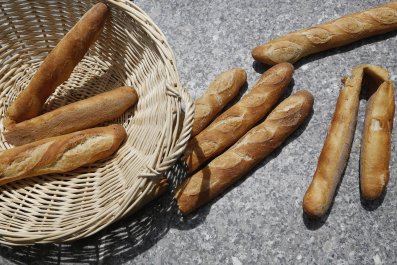As far as I have been able to ascertain, Hanya Yanagihara is the only novelist in the United States who does not live in the bubbling literary cauldron known as Brooklyn. The author of two exceedingly good and strange novels, the 40-year-old author has spent the last 20 years ensconced in a cultural backwater on the wrong side of the East River, watching a procession of bespectacled young Jonathans (Lethem, Foer, et. al.) turn the once-derelict borough of Saturday night fevers and Sunday afternoon baked ziti conclaves into a modern-day Quartier Latin, only with better subway service and organic cupcakes instead of crusty baguettes. She did it, moreover, while holding down a day job instead of pecking sullenly away in a shabby chic Park Slope cafe where some wounded folk singer raunches and rheums on an infinite loop of whiteboy sincerity.
"I would not be able to leave Manhattan, because it would feel like a sort of surrender," Yanagihara told me recently over a sushi lunch in Soho, the lower Manhattan neighborhood where she lives and which is largely the setting for her newest novel, A Little Life. But don't assume that Yanagihara is some cloistered Woody Allen neurotic who'd be utterly lost more than 10 miles from Our Holy Cathedral of Cured Meats (known to some as Katz's Deli). An editor for Condé Nast Traveler, she leaves the city frequently, and had just returned from Oman when we met in early March. She would one day like to live in Asia, in particular Tokyo, whose mixture of ancient beliefs and ultra-modern sensibilities fascinates her.
Yanagihara is a contrarian in more substantial ways, too. She does not have an MFA, that shopworn badge of literary culture, long thought necessary to get published by a good New York house. "It does make things trickier," she admits, in particular when seeking blurbs from fellow authors for a fiction debut. That didn't prove a hindrance, though: The People in the Trees was widely praised as one of the best novels of 2013. Nor has she fallen victim to a sophomore slump, writing A Little Life with furious purpose in 18 months. She had a vision, and she has clearly achieved it. "Hanya Yanagihara's second book announces her as a major American novelist," wrote the usually reserved critic Sam Sacks of The Wall Street Journal.
Many novelists, lacking sufficient imaginative faculty, write what they know, treading close to the shores of the familiar, drifting along on currents of mundanity. Yanagihara wades eagerly into the murkier coves of the human mind, the depthless lagoons most of us would rather skirt. In her first novel, an anthropologist seems to discover the secret to biological immortality on a remote Pacific island called Ivu'ivu. He wins the Nobel Prize, but his career ends in ignominy when he is imprisoned for molesting some of the dozens of Ivu'ivuan children he had adopted. The final scene, in which he rapes a young boy, is as chilling as anything that transpires between Humbert Humbert and Lolita in the 342 hotels and motels they visit.
The novel is based on the real-life case of the virologist D. Carleton Gajdusek, who had been a friend of her uncle and father, both of whom are doctors. Aside from being the story of one man's ruin, Trees is about the despoliation of an island paradise by Western science and its attendant corporations. Yanagihara had wanted to set the novel in Hawaii, where her family is rooted, but was afraid of writing a too-literal "screed against colonization." So she spent 16 years creating a world of her own, fashioned with a restless imagination whose whimsy and faux-scholarship recall the Vladimir Nabokov of Pale Fire.
"My parents were the last [generation] to work in the fields," says Yanagihara, a fourth-generation Hawaiian. She was born in Los Angeles, which she loathes ("the driving, the sunshine... "). The family moved frequently to suit the needs of her father, a hematologist/oncologist: New York City and Baltimore, Texas and Hawaii. Orange County, in all its resplendent horrors. Then came Smith College, which she liked about as much as L.A. ("Awful.")
After college, Yanagihara moved to New York and worked as a publicist for several publishing houses before jumping to the world of magazines, where she continues to work what is a job at once rewarding and demanding. She finds writing and editing for Condé Nast Traveler "relaxing" and "satisfying," especially since she is often dispatched on international assignments. It's service journalism, and that's just fine by her. "They are jobs with beginnings and ends," she tells me, leaving enough time and mental space for her fiction.
Yanagihara's second book is utterly unlike her first. For one, at 730 pages, it is nearly twice as long. And while The People in the Trees was set on a fictional island, A Little Life is set on a real one, the concrete sanctuary Yanagihara calls home. The novel follows, over several decades, a group of four friends who have been together since college (a mashup of Bard and Williams) and have settled in Manhattan. Three are in the arts; the central character, Jude, is a successful corporate litigator who, having been severely abused as a child, continues to suffer from physical and psychic wounds he tries desperately to conceal.
While the first novel was baroque with detail, the second has what Yanagihara calls "a fairy-tale-like quality." Some New York novels, like Tom Wolfe's The Bonfire of the Vanities, relish in the details of the city, gathering narrative strength from brands of shoes and names of restaurants. A Little Life is firmly planted in its setting, but not subservient to it, a rare New York novel that does not even attempt to capture New York. "I hope that the book feels slightly out of time," she told me long after the sushi trays had been cleared and we sat talking over cooling cups of green tea.
The theme of child molestation unites the two novels and, in fact, may be their single superficial point of confluence. In the first, the molester is the protagonist; in the second, the victim takes center-stage. Yanagihara says that when she was beginning A Little Life, she conceived of it as "an answer to the first book." Both portray the sexual act as something necessary but gruesome, gruesome precisely because it is necessary, its pleasure fleeting and its pain lasting.
Jude's terror of sex is understandable, given the sexual violence he suffered at a monastery in the Midwest and elsewhere; more horrible, to the reader, is Jude's inability to confront his pain, his misguided desire to smother it with silence. And with violence against himself. "[I]n compensation for the sex," Yanagihara writes, "there is the cutting, which he has been doing more and more: to help ease the feelings of shame, and to rebuke himself for his feelings of resentment." Jude's body, already damaged by his molesters—a would-be savior in Philadelphia ran over his legs with a car, an abusive boyfriend in New York threw him down a stairwell—is further damaged by his own hand.
Both of Yanagihara's novels lack convincing female characters, Life especially. This was intentional. Yanagihara, who neither has a family nor desires one, says she wanted to explore the notion that "men are offered a much, much smaller emotional vocabulary to work with." Women's emotions were more plentiful and familiar, and hence less alluring for a novelist who has no use for well-trod paths; she wanted, instead, to wend through the humid, lightless crawl spaces of the male mind. How does that limited vocabulary deal with the worst psychic shocks? How does one make it out of the attic? "Are there sorts of damage that are impossible to come back from?"
Yanagihara's editor at Doubleday, Gerry Howard, worried that readers would be unwilling to endure hundreds of pages of Jude's sexual, physical and psychological privations. "This is just too hard for anybody to take," he told Yanagihara, according to a recent Kirkus Reviews profile. "You have made this point quite adequately, and I don't think you need to do it again." However, she insisted that the novel's edges not be softened.
The result is a novel that is often fleet, moving swiftly over many years and many lives. It is, however, occasionally slowed by lengthy disquisitions or dulled by plain language. Yanagihara freely admits that she is not nearly the stylistic equal of her favorite novelist, John Banville: "I will never be that kind of writer."
The kind of writer Yanagihara has already managed to become is plenty intriguing. That might, in part, stem from the lucky fact that she was never bullied or cajoled by an MFA program to write a certain way, about certain things: "Not knowing what you're not supposed to do is very freeing." There are also her endless travels, powered by a curious constitution that doesn't let her "settle into a groove." That happens to be the quality she likes least in other writers.
It is toward the end of our lunch, as the restaurant empties of its customers and fills with grapefruit-colored afternoon light, that a basic question finally occurs to me: Why did she call her novel A Little Life? After all, the life she chronicles (i.e., Jude's) is not little by any literal or figurative measure of literary achievement. It is a mural, not a miniature. Was it irony she sought?
Not so. "All life is small," she declares. She is, at heart, a tragedian drawn to the fundamental futility of human life. Yet she manages to dress that futility in the vestments of literary art and hence make it not only palatable but compelling. "Life will end in death and unhappiness, but we do it anyway," she says. That recalls what her doomed protagonist says in Trees: "There were endings, but none of them were happy." Her fairy tales owe more to Ecclesiastes than to Mother Goose.
Now the restaurant is almost empty. Now our own ending has come. We trade some Manhattan media gossip. We agree that Girls is a very fine show, honest about the horrors of youth. Does that acknowledgement mean we are old? Probably. And we are all dying anyway, Hanya and Hannah Horvath and myself and the sushi chefs, now without anything to do, gazing down at the slabs of piscine flesh. The world teems with difficult truths; Hanya Yanagihara refuses to avoid them. But finally comes the check, and then a joke, and then a recognition of how late it has gotten. Our lives are small, yet they are full. And we emerge back into Manhattan, into the last of the faultless afternoon light.



